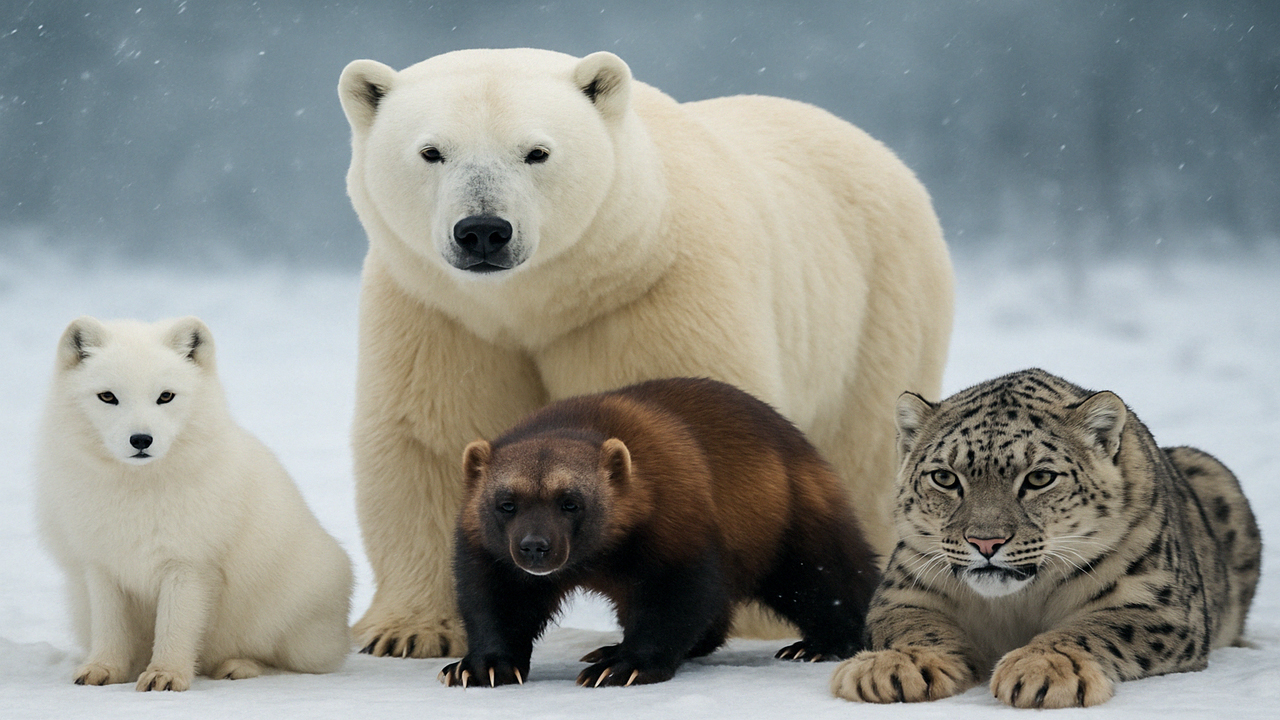
Top 10 Animals with Thick Fur that Live in Cold Weather and have very Sharp Claws
Top Ten Things – Top 10 Animals with Thick Fur that Live in Cold Weather and have very Sharp Claws
Animals that survive in extremely cold regions need special physical traits. Thick fur and sharp claws are essential features for survival. These features help them resist freezing temperatures and catch prey with precision. In this article, we will explore ten animals with thick fur that live in cold weather and possess very sharp claws.
According to Top Ten Things (toptenthings.com), many species evolve thick coats to survive icy climates. Their sharp claws serve as tools for hunting, defense, and climbing. Each animal on this list has unique adaptations that make it a master of survival.
The Arctic fox has one of the thickest furs among mammals. Its fur changes color seasonally, offering camouflage and warmth. During winter, it turns pure white, blending into snowy surroundings.
Arctic foxes have sharp claws for digging into snow and ice. They create dens to shelter from storms and store food. These claws also help them catch lemmings and other small prey.
“Read more : 10 Long Tailed and Furry Animals that live in Natural Forests“
Polar bears are iconic animals with thick fur and massive claws. Their fur appears white but is actually translucent, reflecting light to provide insulation.
Their sharp claws can grow up to 4 inches long. Polar bears use them to break ice and hunt seals. They rely heavily on sea ice, and their survival is deeply connected to Arctic conditions.
As noted by Top Ten Things, polar bears are among the strongest predators in icy habitats.
Wolverines resemble small bears but have the aggression of much larger animals. Their thick fur protects them from the coldest regions in North America and Eurasia.
Their claws are curved and strong, allowing them to tear through frozen meat. Wolverines use them to climb trees, dig through snow, and defend territories.
Despite their small size, wolverines are fearless hunters.
Snow leopards live in the mountain ranges of Central and South Asia. Their thick fur has dense undercoats that protect them from frigid winds.
They have powerful limbs and retractable claws for gripping icy terrain. These claws help them leap great distances when chasing prey.
Their long, thick tails help balance their movements while climbing steep slopes.
Siberian tigers, also known as Amur tigers, are the largest wild cats. They live in the Russian Far East, a region with harsh winters.
Their thick orange fur includes a dense layer of insulation. The claws of Siberian tigers are sharp and retractable, designed to grab large prey like deer and boar.
Top Ten Things highlights their incredible strength and stealth in snow-covered forests.
Lynxes are medium-sized cats that thrive in boreal forests. Their fur is thick and fluffy, especially around the neck and paws.
They have long, sharp claws ideal for gripping ice and climbing trees. Lynxes rely on stealth and precision when hunting rabbits and birds.
Their thickly furred feet act like snowshoes, helping them move easily across snowy landscapes.
“Read more : Entertainment Night Tour in Thailand: Best Spot Location to Enjoy Nightlife in Bangkok“
Though commonly found in temperate regions, grizzlies live in mountainous areas with cold winters. Their dense fur provides excellent insulation.
Grizzlies have some of the strongest claws among land mammals. These claws are not retractable and grow up to 4 inches long. They use them to dig for roots, flip rocks, and defend against threats.
Grizzlies hibernate in winter, and their fur thickens to prepare for long periods of sleep.
Musk oxen have shaggy coats made of long outer hair and a soft underlayer called qiviut. Qiviut is one of the warmest natural fibers known.
Though they are herbivores, musk oxen have sharp hooves and claws for defending against predators. These claws also help them dig through snow to find vegetation.
Their appearance reflects strength and endurance in Arctic tundra life.
Different from the Eurasian lynx, Canadian lynxes are smaller but adapted for deep snow. Their thick fur helps them stay warm in the northern forests of Canada and Alaska.
They have strong claws for climbing and capturing snowshoe hares. These claws retract like other cats’, preserving sharpness.
Canadian lynxes often remain active even during severe snowstorms.
The Himalayan tahr is a wild goat species found in the high altitudes of the Himalayas. It has a thick, woolly coat that grows denser in winter.
Its curved claws provide grip on rocky, snowy terrain. Himalayan tahrs are excellent climbers and can leap from rock to rock with great balance.
They move in herds and are constantly on alert for snow leopards.
Thick fur provides insulation by trapping warm air close to the body. In contrast, sharp claws allow animals to hunt, dig, and climb. Together, these features ensure that animals endure freezing temperatures and harsh landscapes.
These adaptations are products of evolution and natural selection. Animals that cannot survive the cold do not pass on their traits. Those with dense fur and functional claws have a higher survival rate.
The ten animals listed above prove how nature equips species to survive extreme climates. From the Arctic fox to the Himalayan tahr, each one thrives in cold habitats using its thick fur and sharp claws.
If you are interested in more fascinating wildlife facts, visit Top Ten Things at toptenthings.com for regular updates and deep dives into nature’s most incredible creatures.
Understanding these adaptations not only satisfies curiosity but also reminds us of the importance of conserving these unique species and their habitats.